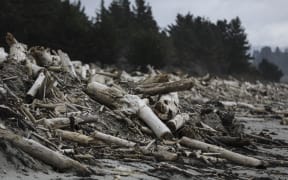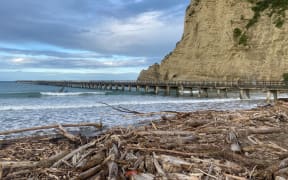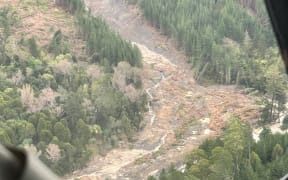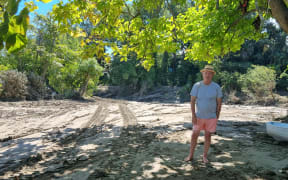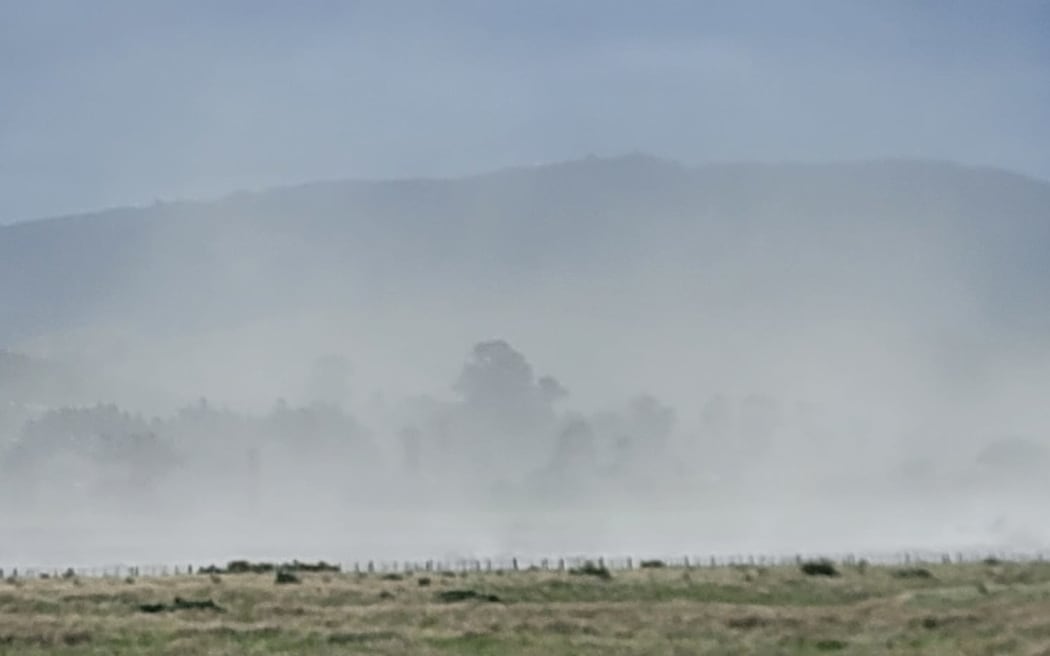
There are about a dozen "bad days" for dust each year in the lower Waiapu Valley, north of Gisborne, resident Graeme Atkins says. Photo: Graeme Atkins
Residents in parts of Tairāwhiti fear a future on their land is in jeopardy with silt dust making the place unliveable.
Years of severe weather has left thick layers of silt in its wake, and when it is whipped up by the wind, locals feel suffocated - forcing them to shut themselves inside, or flee.
Graeme Atkins lives in the lower Waiapu Valley north of Gisborne - and when the north-westerly blows, he packs up and leaves.
There are about a dozen proper "bad days" each year, most in the dry summer.
"So much erosion has happened, and it all deposits fresh silt," he said.
"When it dries out in the sun at this time of the year, the wind gets it all airborne, and you know, really, there's not much you can do about it."
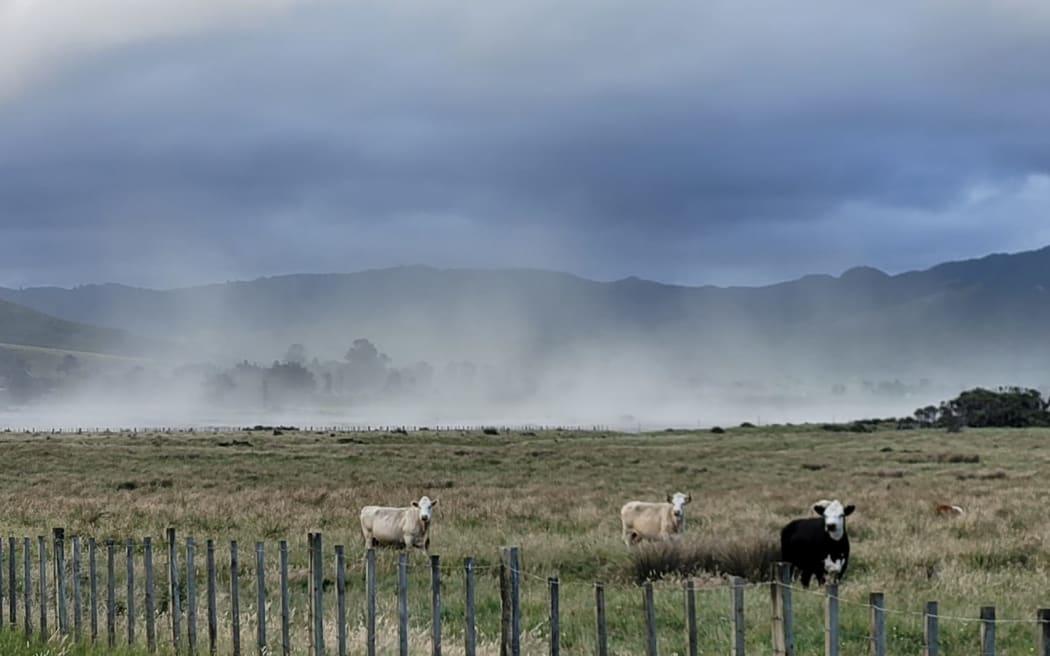
Erosion-prone land was cleared decades ago to make way for farms and forestry, which did not do as good a job at keeping the land intact. Photo: Graeme Atkins
On those bad days, he shuts up the house and heads south to a whānau home in Tokomaru Bay.
The problem was not going away - and some in Atkins' community are thinking of packing up more permanently, he said.
"It's gonna be decades and decades in the making, so it's an issue that's big enough to, you know, if people are thinking of moving away, when you see the dust on a bad day, it'll probably be a big motivator to go, 'yep, we outta here'."
Poor land use choices had caused the mess that was exacerbated by the likes of Cyclone Gabrielle, he said.
Decades ago, steep, erosion-prone land was cleared of bush to make way for farms and forestry, which did not do as good a job at keeping the ground intact.
In Atkins' mind, better land use choices were all that could fix it.
"We need permanent tree cover on a lot of the steep land here," he said.
"Our region, we need to have some real hard thinking about the land use because otherwise we won't have a future here.
"It's as simple as that."
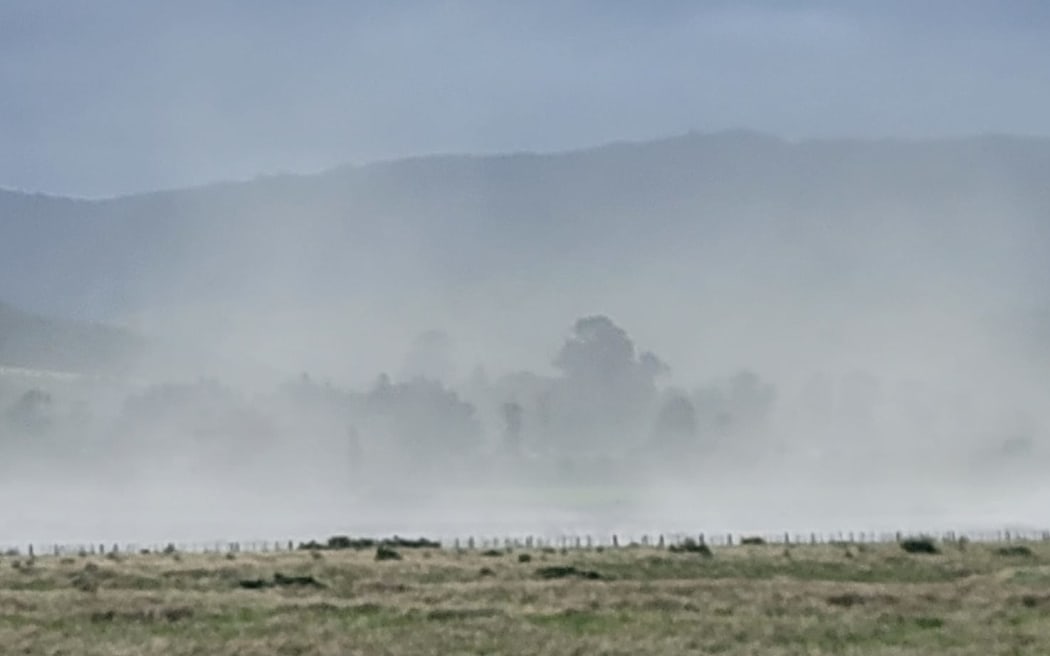
A woman who lives on the outskirts of Ruatoria likened the most severe dust storm to the Australian outback during a desert storm. Photo: Graeme Atkins
About 25 kilometres upstream, Marijke Warmenhoven lives on the outskirts of Ruatoria and has copped the dust, too.
"The most severe dust storm, it was like the ... Australian outback in a desert storm," she said.
"The air was just filthy."
An environmentalist, she agreed with Atkins about the cause - and that locals were now paying the price.
"I actually get quite depressed," she said.
"I've been outside, and like mowing the lawns or something, and you can feel the grit on your teeth.
"What's happening to us here really is a health issue in my view."
Gisborne District Council said it was first contacted in 2020 about the dust storms, and air quality monitors were installed the same year.
"The monitoring has shown that while these dust events are intense, they are usually short-lived (less than 20 minutes) and the air quality over a day does not breach the air quality standards for the protection of human health," sustainable futures director Joanna Noble said.
But Noble said last year's weather had made matters worse, and the council was considering what could be done about it.
Further south, the National Institute of Water and Atmospheric Research (NIWA) has been monitoring air quality in Hawke's Bay following Cyclone Gabrielle, with about 30 monitors dotted around the region.
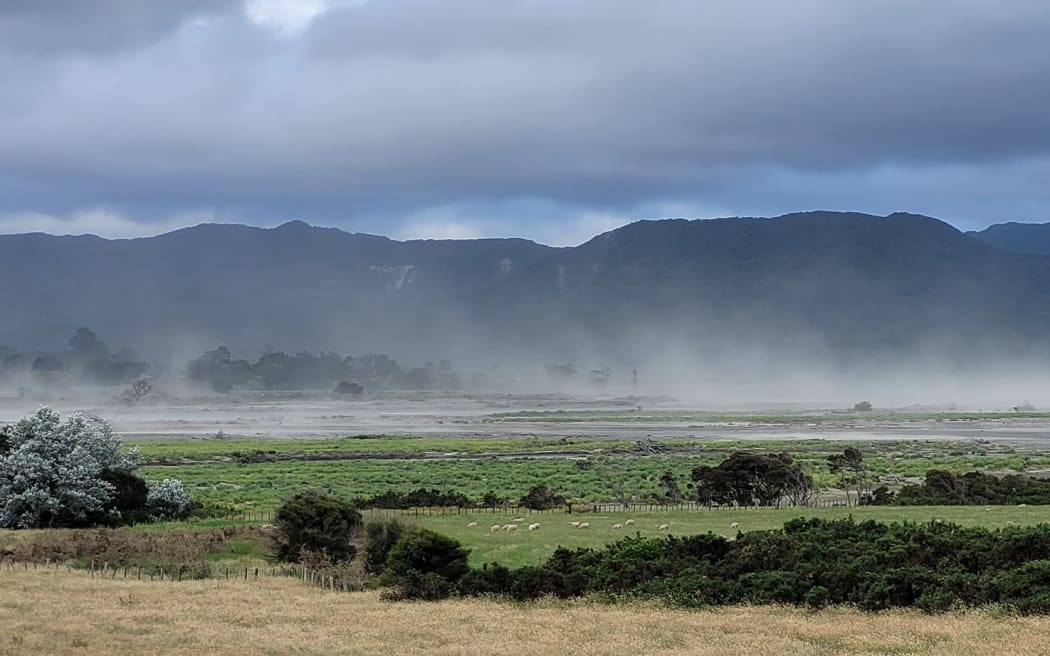
A NIWA air quality scientist says the dust is most hazardous to those with respiratory issues, but otherwise it was unpleasant rather than harmful. Photo: Graeme Atkins
NIWA principal air quality scientist Guy Coulson said dust levels were high initially, but soon died down - aside from spikes of high volumes when silt was being cleared from land and moved to deposit sites.
But the problem could return.
"We are likely to see more of these kind of events, and if the geography of the region is of the kind where silt is going to get washed down valleys, then yes, it's entirely possible," Coulson said.
The dust was most hazardous for those with respiratory issues, but otherwise, it was not harmful, he said - just unpleasant.
Unpleasant enough that some whānau want out if the problem drags on.

